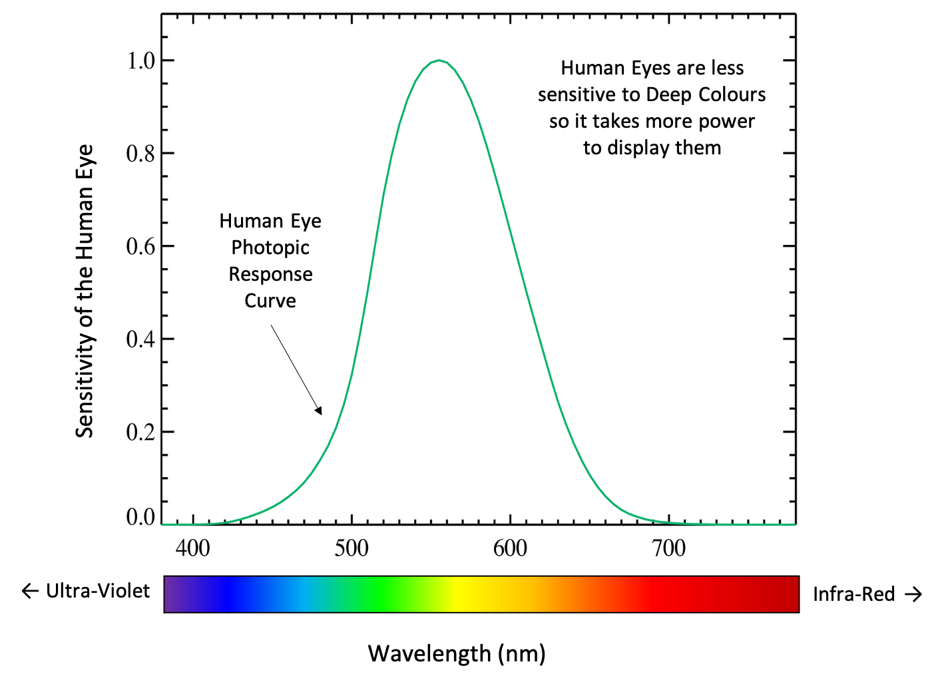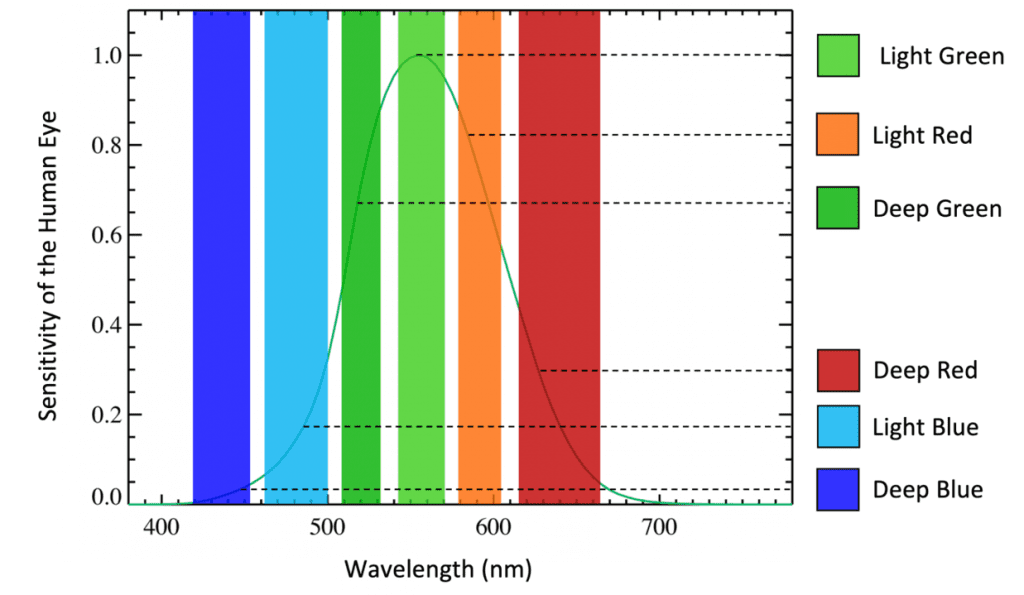The power savings from the novel TurboLED display design can be reinvested in the display, and the display can be made brighter or the deep colors can be made deeper. This is shown in the color gamut image. The deep colors show the Rec. 2020 color gamut depicted in the CIE 1931 (x, y) chromaticity diagram. TurboLED can enable displays to render the Rec. 2020 color gamut.





